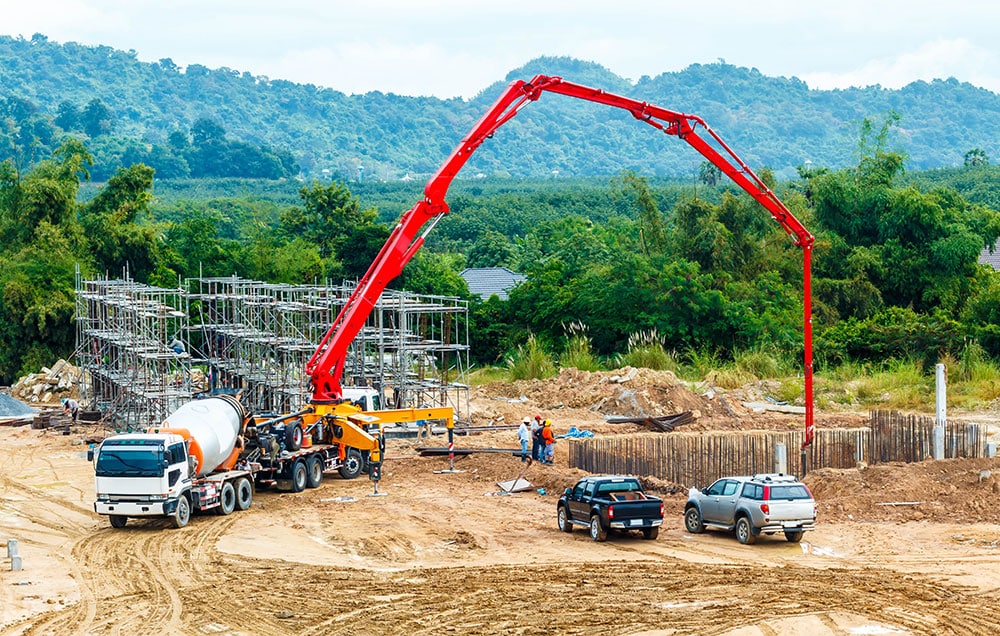One of the biggest parts of construction is discovering new solutions that make the construction process as efficient as possible. One important innovation in concrete construction is the invention of the concrete pump. The concrete pump, and its various forms, has revolutionized concrete pouring in many ways.
Before concrete pumps, pouring concrete on high-rises was a painstaking task where buckets of concrete had to be lifted up by cranes to the pour site, significantly extending the time of the construction project. Nowadays, concrete pumps make pouring concrete at different levels far easier and faster. Concrete pumps also distribute the concrete at a faster rate in general, making any concrete pour go by more quickly.
What Concrete Pumps Are and How They Work
There are several forms of concrete pumps, but they all work on the same principle. The design uses two cylinders fitted with pistons that move in alternating rhythms while drawing concrete from a hopper. While one tube draws in the concrete in by creating air pressure, the other cylinder discharges the concrete onto the pour site. It’s a simple system that makes complex concrete pours easier.
Different Types of Concrete Pumps
Mobile Concrete Pump: this type of pump is very versatile and makes pouring concrete on multiple levels go by very quickly. The mobile pump is essentially a concrete pump that is been attached to a mobile boom. The boom acts as a large “arm” that allows the concrete pump to reach different levels and positions without having to move around the operation much. Using this type of pump, and a sizeable group of prepared workers, you can efficiently knock out concrete pours at different levels and positions.
Stationary Pump: this type of concrete pump is attached to the back of a truck as a trailer and is transported to an appropriate proximity to the pour site so as to allow a pipeline to be attached and connected to a boom for precise concrete pouring.
Truck Mounted Static Pump: in situations where tight spaces out of the range of the boom need concrete pours, the stationary pump can be mounted onto the back of a truck. The truck-mounted static pump can then make its way to the precise spot of the concrete pour.
Truck Mixer Concrete Pump: static and mobile pumps most often draw the liquid concrete from hoppers that have been previously filled with concrete. There are also arrangements where the concrete pump, whether it is mobile or static, is attached directly to the mixing truck. This is a comprehensive solution that allows for the entire concrete pouring operation to go mobile, which is very convenient. At Knight’s companies, we are your local concrete experts offering services in and around South Carolina. We offer high-quality ready-mix concrete, precast, trucking services, and more. Contact Knight’s today to see how we can help make your next project a success.

